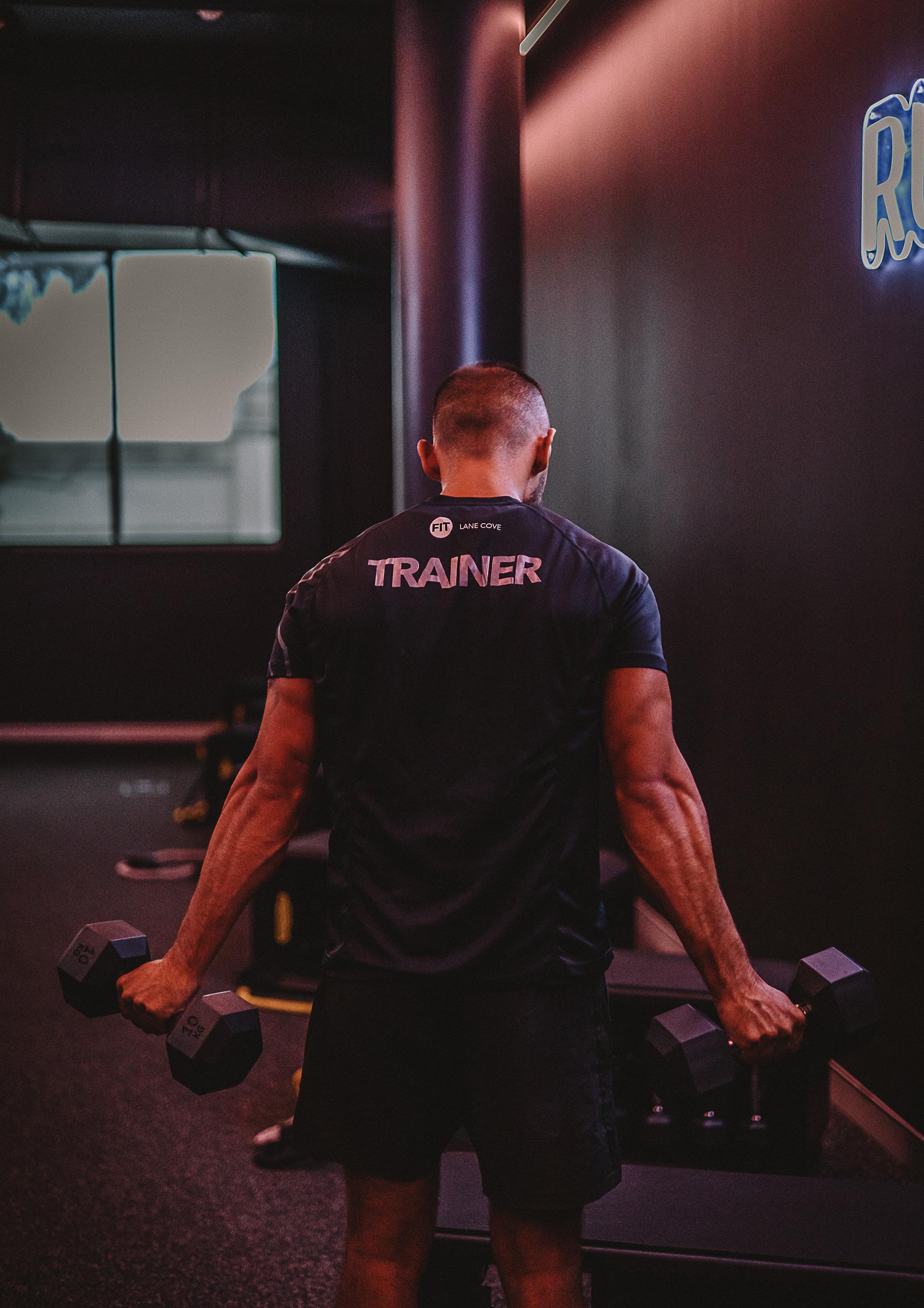






ISSUE ONE
Edited by Tom Box
Editorial direction and design by VUE Studio
Text by Dugald Pollitt Tom Walton Ashley Alexander Andreas Muratidi
Photography by VUE Studio Tom Box Gather & Feast Tom Walton
Published by FIT Lane Cove
Printed in Australia
All rights reserved © FIT Lane Cove 2022
Welcome To Fitlife Editorial
Tips To Prevent Burnout Wellness
Stay On Track And Reach Your Fitness Goals Wellness
Where The Rubber Meets The Road Workout
5 Kettlebell Exercises Workout
30-Minute Functional Fitness Workout Workout
How To Recover After A Workout Recovery
Tight Hammies? Try These Stretches Recovery
Green Egg Scramble On Sourdough Nutrition
Coconut & Ginger Steamed Chicken With Fresh Herb & Noodle Salad Nutrition
Summer Fish Tacos Nutrition
Smoky Whole Eggplants With Crispy Chickpeas, Olives And Tahini Nutrition
Salted Macadamia Nut Brittle Ice Cream Bars Nutrition
More Fish, More Veg Nine Steps To A Better Connection To Food Sustainability By Tom Walton Nutrition
Meal Plans Nutrition
Top 5 Summer Spots In Sydney Lifestyle

Welcome to our exciting new FITLIFE Magazine, designed and developed to allow you to take some time out for yourself and leave the everyday behind.
There is a never-ending supply of information regarding your lifestyle, which if you are on your device can sometimes be overwhelming and distracting. At FITLIFE, we aim to bring you relevant articles across the important aspects of your life as well as help you plan your workouts, your routine and your healthy living.
Leaving the everyday behind comes from our EXHALE Yoga studio, which when first developed we wanted to create a space where you could practice Yoga, Meditation, Pilates and Barre without the interruptions of the outside world, hence we came up with Leave the Everyday Behind motto which we now extend to our FITLIFE Magazine.
Within each issue you will see the latest images of our amazing spaces, team members and in the future our community, consisting of our members journey within FIT. The purpose is to illustrate the amazing achievements by both our team as well as our community.
FITLIFE will be released twice a year celebrating the Spring/Summer seasons and the Autumn/ Winter seasons. Both will explore the journey of a FITLIFE through fitness, lifestyle and happiness.
Enjoy your reading, take the time to sit and soak it all up and then attempt the workouts, choose a new recipe to trial or explore the wonderful world we live in.
Life feels more intense than it’s ever been at the moment, doesn’t it? Our friends, family and ourselves are all going ten to the dozen. Trying to maintain a social life, putting in the hours at work, keeping up with our fitness goals - burnout is a real risk we all face. When you’re including exercise as part of your lifestyle, you need to be careful that you don’t overdo it.
Being mentally fit is just as important as being physically fit so here are a few wellness tips to help prevent burnout.
Preventing burnout requires you to take your recovery as seriously as you take your training. It includes getting your recovery nutrition on point, optimising your sleep, and balancing your training with everything else that is going on in your life.
Here are some tips to help improve your recovery:
• Get 7-8 hours of sleep each night
Establish a regular time to go to bed and get up Keep technology out of the bedroom
• Drink plenty of water daily
• Do some light active recovery exercise on your non-exercise days
• Use a foam roller for a self-myofascial massage after exercise
Burnout can also be avoided by setting realistic training goals. When your goals are unrealistic, you may be driven to do more and more in order to reach that goal. As a result, you will not be giving your body enough time to recover. This will lead to diminished performance, which is a classic sign of a lack of recovery.
The key to avoiding over training is to be constantly aware of how your mind and body are responding. Keeping a journal will help you to do this. Take note of how your body feels after your workout as well as your mental state in terms of motivation to train. If your training performance has diminished, you should try to discover why. Your immediate reaction to a diminished performance should be to do less rather than more!
Mindfulness is the ability to concentrate, pay attention to your situation and be fully ‘in the moment.’ Through the process of mindfulness, you will be able to slow down your conscious thoughts. By doing this you’ll be able to awaken the spirit within. It will remind you that there is more to life than the challenges with which you are confronted with on a daily basis.
Mindfulness moments may occur at any time. They are designed to allow you to strip away the layers and discover the you that lies beneath them. Here is a Mindful Moment that you can incorporate immediately:
Who Am I? Simply ask yourself the following question...
Who Am I? Listen to your response (likely a label like I’m a teacher)
Respond with... Not that
Repeat this process over and over until you have produced a long list of labels. These labels will more than likely describe your position in society, your personality or your talents.
Keep uncovering layers until you arrive at the question... Who is asking the question?
Your answer to this question will allow you to cut through the list of illusory labels with which we pigeonhole ourselves. You will then be able to become more insightful about who you really are. Get into the habit of spending 10-15 minutes in mindful meditation each day.
By taking care of your body and your mind, you will be able to stay on track with your goals and avoid burnout. Take on board the four tips outlined above to continue giving your body the love and respect it deserves.

New year, new me! We’ve all been guilty of getting that initial spark of inspiration when you start an exercise program. Your motivation is high, you’ve set goals and are determined to work towards them. But after a few weeks, keeping that fire burning gets harder and sticking to your fitness program becomes a real challenge. When our lives get busy, our fitness ambitions tend to take a backseat. Yet it’s consistency and staying on track that will determine whether or not you reach those fitness goals.
Here are four surefire ways to stay on track:
You probably heard the saying “a problem shared is a problem halved.” Well, here’s another one …
A fitness goal shared is a commitment doubled.
When you tell other people about your fitness goal, you become more accountable. They are likely to ask you how you getting on in working towards it. Every time they do, your conscience gets another nudge to keep you on track.
As well as having long-term goals, you should also have shorter, stepping-stone goals. We recommend setting a large yearly goal, which may be around weight loss or muscle gain, and breaking it down into three monthly, stepping-stone goals. Then break these down further into weekly and daily goals.
Here’s an example for muscle gain:
• In 12 months’ time, I will add 6kg of lean muscle to my body as measured by a body composition analysis.
• In the next three months, I will add 1.5kg of lean muscle tissue to my body.
In the next four weeks, I will add 0.5kg of lean muscle tissue.
• This week I will complete five gym sessions and eat 3000 calories per day.
• Today I will complete an awesome workout. I will achieve a new six rep max on the dumbbell bench press and finish with an eight-minute HIIT session.
By breaking down your goals like this, you know exactly what you need to be doing every day to achieve your long-term goal. This will help you to stay focused and motivated.
When you team up with a training partner, you will become a whole lot more accountable. There is an extra element of motivation to get out of bed on a cold, rainy morning when you know that your buddy is waiting for you at the gym. Training together will also allow you to feed off each other so that when one’s motivation is lagging the other can pick him up.
A training journal is a notepad, or a computer spreadsheet, on which you record your workouts. Take note of the exercises, sets and reps as well as the weights you have been using. You should also record how you feel before, during and after the workout in terms of mood, energy and strength levels.
By keeping a training journal, you’re able to keep your workouts more structured and analyse what is working for you and what isn’t. You will also be able to look back and see how much stronger and fitter you have become. This, in itself, can be a great source of motivation to keep you on track with your goals.
The key thing to remember as you are working toward your fitness goals is that it isn’t a sprint. You are embarking upon a lifetime of healthy habits. Any worthwhile fitness goal takes a long time to achieve and a lot of dedication, hard work, and consistency. Focus on what you need to do over the next 24 hours and you will be slowly but steadily progressing towards your goal attainment.
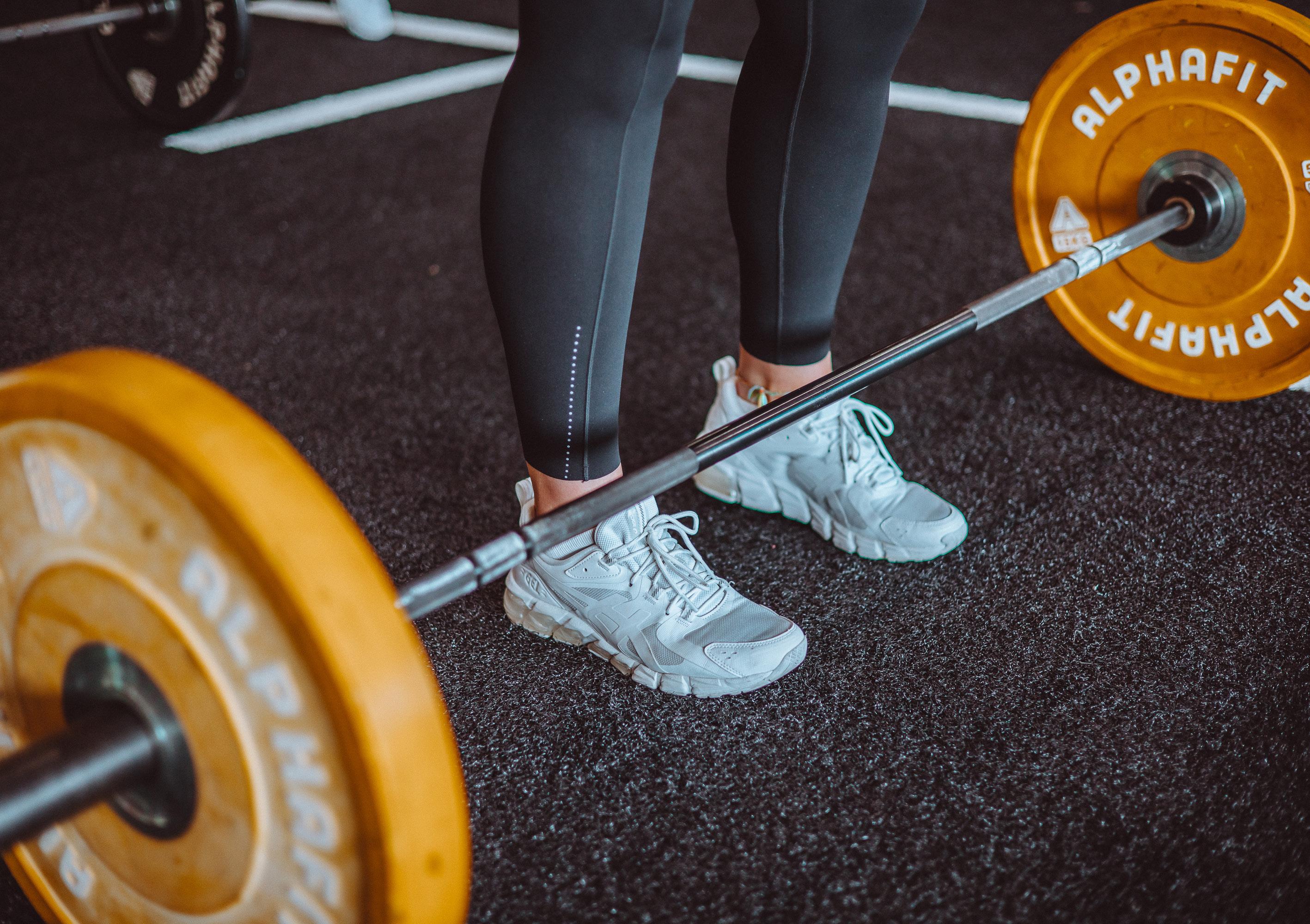

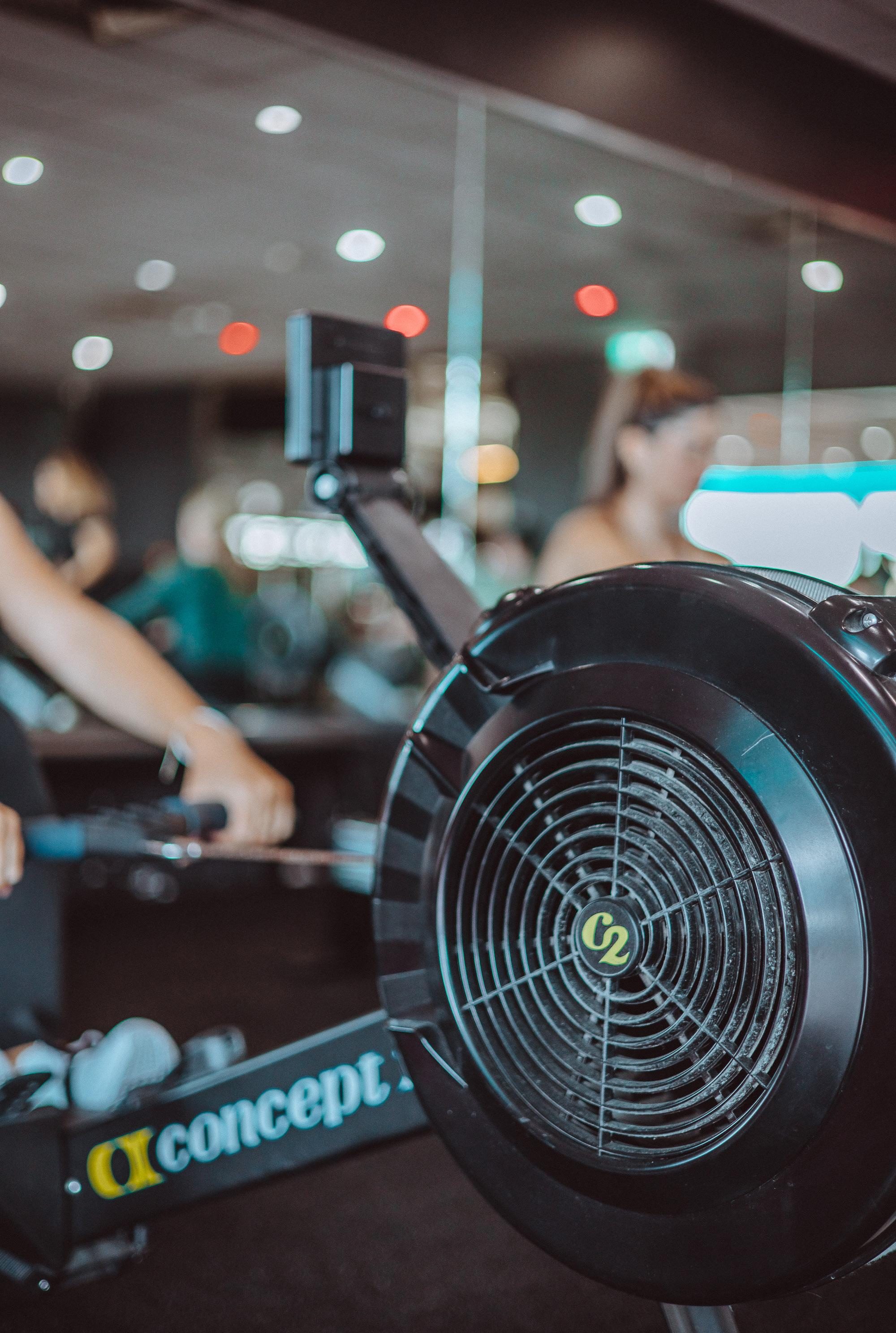


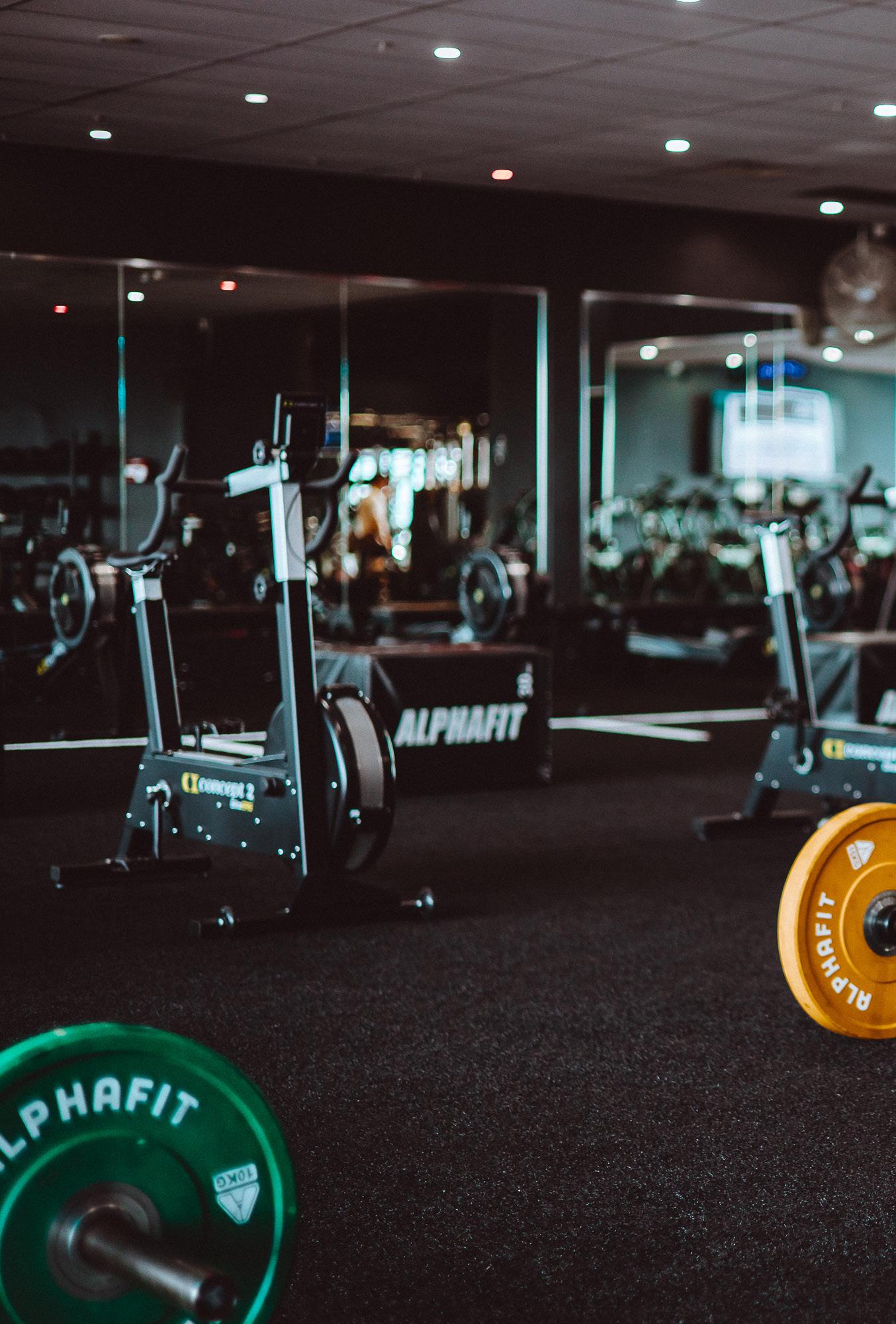

Sometimes when we’re on our individual fitness journeys it can be easy to get comfortable in our workout routines. One common place we can see people stagnating in their fitness is on the treadmill. Don’t get us wrong, the treadmill is an incredible tool to build fitness but it’s also easy to mindlessly pound away and tune out. The truth is that if you focus on the treadmill you risk getting nowhere, literally. Not only will you physically stay in the same place, but your fitness won’t progress.
But don’t fret, there is a better way! And one you’re probably very familiar with - high-intensity interval training. It’s been around for years and has seen a resurgence in popularity over the last few. HIIT started as a method of running on the track but is now being applied to all sorts of training, including bodyweight and resistance exercises.
High-Intensity Interval Training evolved out of the unique training methods that the head coach of the Japanese Olympic Speed Skating team, Irisawa Koichi developed in 1996. Koichi had the athletes exercise on a cycle ergometer for extremely hard and fast 20-second sessions, followed by 10 seconds of rest. From this, a study emerged headed by Dr. Azumi Tabata. Today, HIIT training is commonly referred to as the Tabata Protocol.
Tabata’s studies showed his subjects produced impressive results that make traditional (steady state) cardio seem ineffective by comparison. The system claimed worldwide interest and HIIT has now become one of the most popular ways to train.
Maximum fat loss – With HIIT, you will burn a lot of calories while you’re training. But, you will burn even more calories after the workout. That’s because HIIT brings on the excess post-oxygen consumption (EPOC) effect, which boosts your metabolism for 48 hours after your session.
Very little time required – From start to finish, your session will take 8 minutes (and half of that will be warming up/down). HIIT is, in fact, the most timeeffective cardio that exists.
Do it anywhere – You can do HIIT at FIT, on the track or in your living room. That means that you no longer have any barriers – or excuses.
Lose weight, not muscle – HIIT training is intense. It activates muscle tissue, engaging your fast and slow twitch fibres. That means that you will retain your muscle tissue as you burn off the body fat.
Start your HIIT treadmill workout with a 2-minute warmup at a medium pace. This should be between 5-6.5 km/hour. Build up the speed over the last 30 seconds until you run at full capacity as soon as you hit the 2-minute mark. During your warm-up get your mind prepared for the all-out sprint that is about to take place.
Immediately the timer ticks over to 2 minutes, start your sprint. This should be an all-out run. Imagine that you’re being chased by a very hungry and very large dog! Run freely with your arms pumping at your sides.
Continue sprinting for exactly 20 seconds. Then throw your legs out to the sides of the treadmill running belt to allow yourself exactly 10 seconds of rest.
As soon as your 10-second rest time is up, jump back onto the treadmill for your second sprint. Your job now is to keep sprinting at the same intensity as you did on your first sprint.
Repeat this process until you have completed 8 rounds of sprints.
Once you have completed your 8th sprint, finish with a slow 2-minute warm down with the treadmill speed at 3-4 km/hour.
Your HIIT treadmill workout will take up all 8 minutes, including your warm-up and cool-down. In that short period of time, you will be churning through a ton of calories while also boosting your metabolism so that you will also burn more calories for the next 24-36 hours. This type of treadmill workout will be a lot harder than the traditionally slow, steady cardio workout that most people do, but it works - and, at the end of the day, that’s what really counts!
Kettle bells are a unique training tool that provides the extra challenge of uneven weight to your workout. That requires your core and other balance muscles to work harder as you target the main muscle being worked.
Kettle bells are especially good at working your core and legs. In this article. I’ve put together a super effective 5-exercise kettle bell core and leg workout that hits your quads, glutes, hamstrings, and core while also burning a tonne of calories.
The kettle bell workouts work great as a circuit. Perform each exercise for 45 seconds. Then allow yourself 15 seconds to recover and move into position for the next exercise. When you’ve completed the circuit, rest for exactly 60 seconds before going through it a second time. Your goal is to work up to completing three rounds of the circuit.
Begin in a high plank position, taking a wide stance with your feet planted far apart and holding a kettle bell in each hand.
Pull the right kettle bell to chest level.
Lift your right arm straight up, rotating your torso to stack your shoulders, and turn your heels to the left so that your body and arms form a team a T.
Lower the weight back to the floor to return to the starting position.
Continue alternating sides for 45 seconds.
Stand with your feet wide apart holding a kettle bell in your right hand between your legs. Bend forward slightly, giving your back flat and pushing out your butt.
Bring the kettle bell towards your left leg, and receive it in your left hand, which should come from behind your left leg.
Repeat the movement with your left hand, passing the kettle bell from in front of your left leg to your right hand behind your right leg. This forms a figure 8 around your static legs.
Repeat in both directions for 45 seconds.
Holding a kettle bell with both hands close to your chest, and with your feet placed a little wider than shoulder-width apart on your toes pointing slightly outward.
Squat down until your thighs are parallel to the floor, bringing your elbows to your thighs.
Keeping your back flat, pushed through your heels back to the starting position. Continue moving fluidly for 45 seconds.
With your right arm by your side and your feet shoulder-width apart, stand with a kettle bell in your left hand, raised overhead.
Push your left hip out to the left, and slightly bend your needs while lowering your torso to the right as far as possible.
Switch hands, and then return to the starting position.
Continue for 45 seconds.
On the next round of the circuit, switch hands to work on the opposite side.
Stand with your feet a little wider than shoulderwidth apart, holding a pair of kettle bell at your sides.
Squat down, leaning forward slightly and sticking out your glutes. Bring your arms between your legs so that the kettle bells and next to your inner thighs.
In one swift, determined move, drive through your hips and swing the kettle bells overhead.
Lower your arms to the starting position, and then repeat until 45 seconds are up.
Perform this core and leg kettle bell workout 2 to 3 times per week. On other days, work your chest, back, arms and shoulders to ensure the complete development of your body.
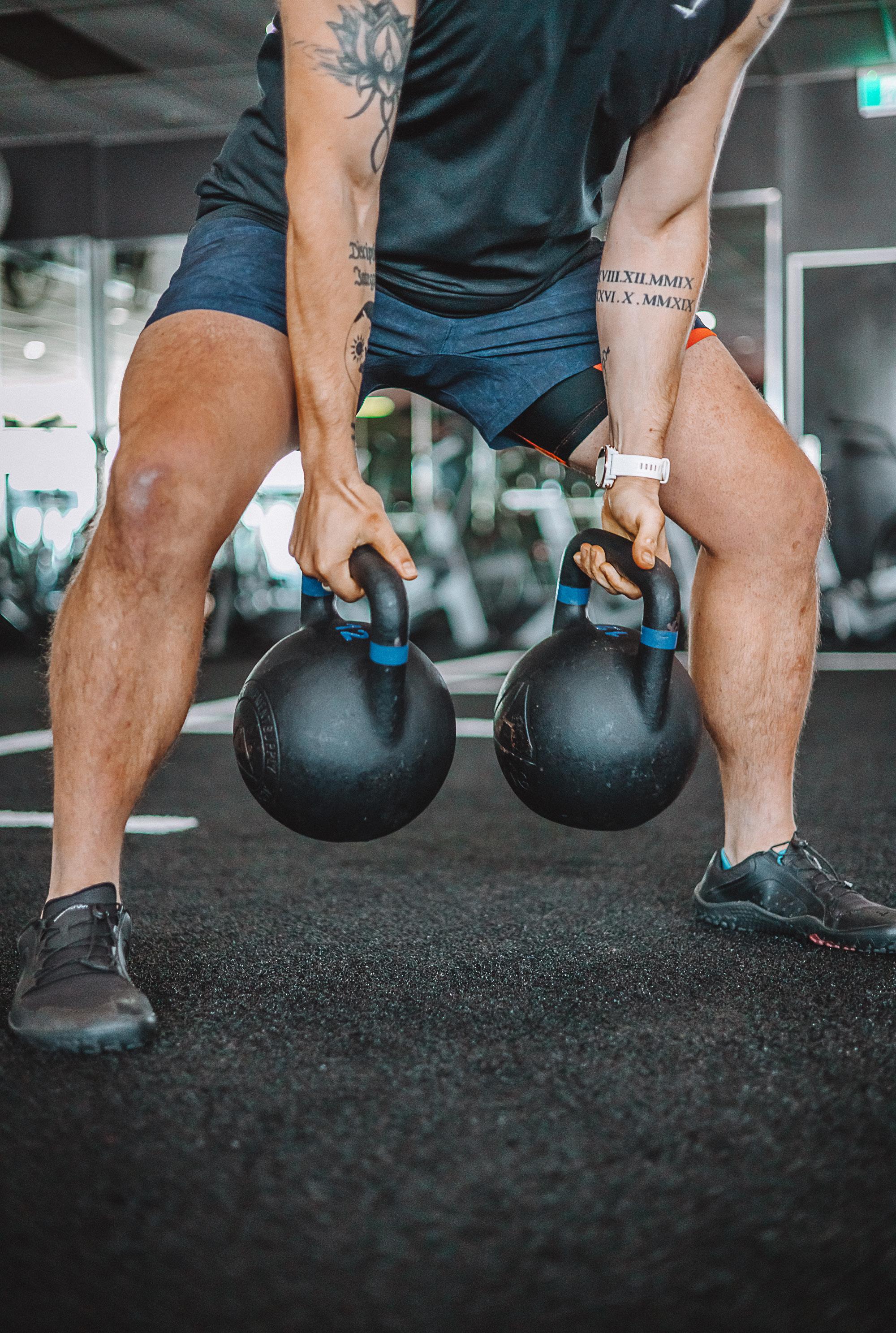



Functional fitness is all about working your body in a way that simulates the way it moves in real life - as a functional unit. When you train functionally, your muscles learn to work together, they’ll be more coordinated, agile, and balanced.
In this article, we’ll lay out a 30-minute functional fitness workout that will work the entire body. Perform each exercise for 30 seconds, and then go on to the next one without any rest. Once you’ve completed all 5 exercises, rest for two minutes, before doing another round.
Work up to completing 3 rounds of the workout.
Get down in the high plank position, balancing your toes with your feet together. Place a medicine ball beneath your left hand.
Bend your elbows to lower your chest toward the floor, maintaining a single plane from shoulder to feet.
Push back up with your arms to full extension. At the top, transfer the ball across to your right hand and repeat the movement. Continue alternating sides to complete your rep count.
Stand with your feet together and your arms above your head.
Descend into a squat, placing your hands on the floor in front of you.
In one quick explosive movement, kick your feet back to get into a high plank position. Perform a single push-up.
In another quick motion, jump your feedback into a squat and then jump into the air.
Return to the starting position and repeat for the desired number of reps.
Stand with your feet shoulder-width apart, holding a barbell with an overhead grip at arm’s length. The hands should be placed wider than shoulderwidth, close to the weight plates. Keep your arm straight and your core engaged as you press the bar overhead. This is the starting position.
Keeping your torso in an upright position, and the bar pressed overhead, drop down into a squat. Shift your hips back, bending at the hips, knees, and ankles, until the tops of your thighs are parallel to the floor.
To return to the starting position, extend your hips and legs, powering through your heels until both legs are straight.
Continue for the desired number of reps.
Sit with your legs outstretched, grasping a kettlebell in front of your chest with both hands.
Keeping your feet together, lift both legs off the floor, shift your weight back and use the kettlebell as a counterbalance.
Lower your legs to just a few inches off the floor. Repeat further the desired number of reps, never letting your feet touch the floor.
Holding a kettlebell in your right hand, stand with your back straight and your legs bent.
Stand up straight, bringing the kettlebell upward. At the top of the movement, pass the kettlebell to your left hand.
Return to the starting position with your knees bent. Continue for the recommended rep count, alternating the hand that begins the exercise holding the kettlebell.
This functional fitness workout is an excellent way to improve your cardiovascular fitness, strengthen the major muscles of your body and burn calories at the same time. We recommend doing it 2 to 3 times per week for the best results.


After a workout, you’ll probably be feeling pretty exhausted, your muscles will be aching, glycogen stores will be depleted and your whole body will be in need of rest. To give relief to your aching muscles, one of the best things you can do is spend time in either a sauna or a steam room.
Thankfully here at FIT we have both of these available for you to make the most of and have the best post-workout recovery possible.
The sauna and the steam room both provide an excellent way to relax and soothe your working muscles after a workout. They will both increase your heart rate and get the heart pumping as a result of the increased body temperature. The increased heat will speed up the process by which oxygen and nutrients are delivered to the muscle cells to nourish them.
The increased heat of both the sauna and steam room will dilate your blood vessels. This will allow more blood to rush through your veins and into your muscles. As a result, you may experience an enhanced pump effect during your time spent in a steam room or sauna after your workout.
During your session, you will sweat heavily. This will help to remove toxins and invigorate your skin. Another benefit of your post-workout heat session is that you will increase what is called hyperthermic conditioning. This has been shown to greatly increase endurance levels. So, the more time you spend in the sauna or steam room, the less tired you will be from your future workout sessions.
Your heat session will also release the brain chemicals noradrenaline, adrenaline, and cortisol. This results in a reduced level of muscle inflammation after your workout, further promoting muscle recovery.
One more benefit of hyperthermic conditioning is that it has been shown to boost people’s moods, promoting feelings of confidence and self-esteem. In fact, studies have shown that hyperthermic conditioning may be a useful method of antidepressant therapy.
The main difference between a sauna and a steam room is the type of heat they supply. The steam room supplies wet heat, while a sauna supplies dry heat. A sauna is heated by a small stove, which may be electric, gas, or wood burning. The stove heats a pile of rocks that emit heat. This heat can be up to 40° or even hotter.
Steam rooms are warmed using external water from a generator that pumps steam into the room. This makes the environment very humid and produces wet heat. You will end up sweating more in a steam room than in a sauna. That is because the condensation doesn’t give you a sweater chance to evaporate. As a result, a steam room is a better option for detoxing. They are also better for people with breathing issues.
So sauna or steam? Both are excellent options for your post-workout recovery routine, a sauna is a better post-workout recovery choice. Most of the benefits of this environment post-workout come from the excess heat. So the option that provides the most heat and, therefore, increases blood flow to your muscles is going to provide the best bang for your buck. That option is the sauna.
Sitting at the back of your upper legs as they do, the hamstrings tend to be a neglected body part for many people. They can quickly become imbalanced in terms of both strength and flexibility compared to their opposing muscle group - the quadriceps. This causes problems, the most common being tightness. Let’s have a look at four great stretching exercises to overcome this.
The standing hamstring stretch is a simple but very effective way to counteract hamstring tightness. At the same time that will loosen up your calves and your lower back.
Stand with your right leg bent and your left leg extended in front of you with the heel on the floor.
Lean over your left leg, resting both hands above your knee. Place the majority of your body weight on your front heel while feeling the stretch in the hamstring.
Hold for 30 seconds, then release the stretch, and repeat on the other side.
The tractus iliotibialis, more commonly referred to as the iliotibial band or ITB, is a band of tissue that links your hips and shins and connects with your major muscle groups. This is an excellent stretch to overcome common problems in the hamstrings, quadriceps, hips, and knees.
Stand upright, with your arms along your sides, and cross your right foot in front of your left foot.
Bending at the waist, gradually reach toward the floor with your hands.
Hold for 30 seconds, release the stretch, and then slowly roll up to the start position. Repeat on the opposite side.
The knee-to-chest hug is an easy-to-do stretch that is excellent to release tightness in the hamstrings and lower back. It will also increase your range of motion through the spine. This is a very good exercise to do if you have stiffness that is related to spinal arthritis or spinal stenosis.
Lie on your back with your legs together and arms outstretched.
Bend your left knee toward your chest, and bring your foot to your body’s midline. Clasp your hands together to hold your knee, and gently pull your knee in toward your chest.
Pull your knees sideways and down across your body as far as is comfortable.
Hold for 30 seconds, release the stretch, and then repeat on the opposite side.
The half straddle stretch stretches out the hamstrings. It will also benefit your lower torso, open up your hips and lengthen your obliques, thighs, quadriceps and calves.
Sit upright with your knees bent.
Keeping your right knee bent, lower it to the floor and draw your right foot toward your groin.
Extend your left leg straight out to the left side.
Plant your arms on the floor behind you to support your lower back as you stretch.
Hold for 30 seconds, release the stretch and repeat on the opposite side.
Hold each stretch for 30 seconds. Once, you’ve been through the circuit, rest for 30 seconds and then repeat two more times. Do this routine a couple of times per week and whenever you feel specific tightness in the hamstrings.


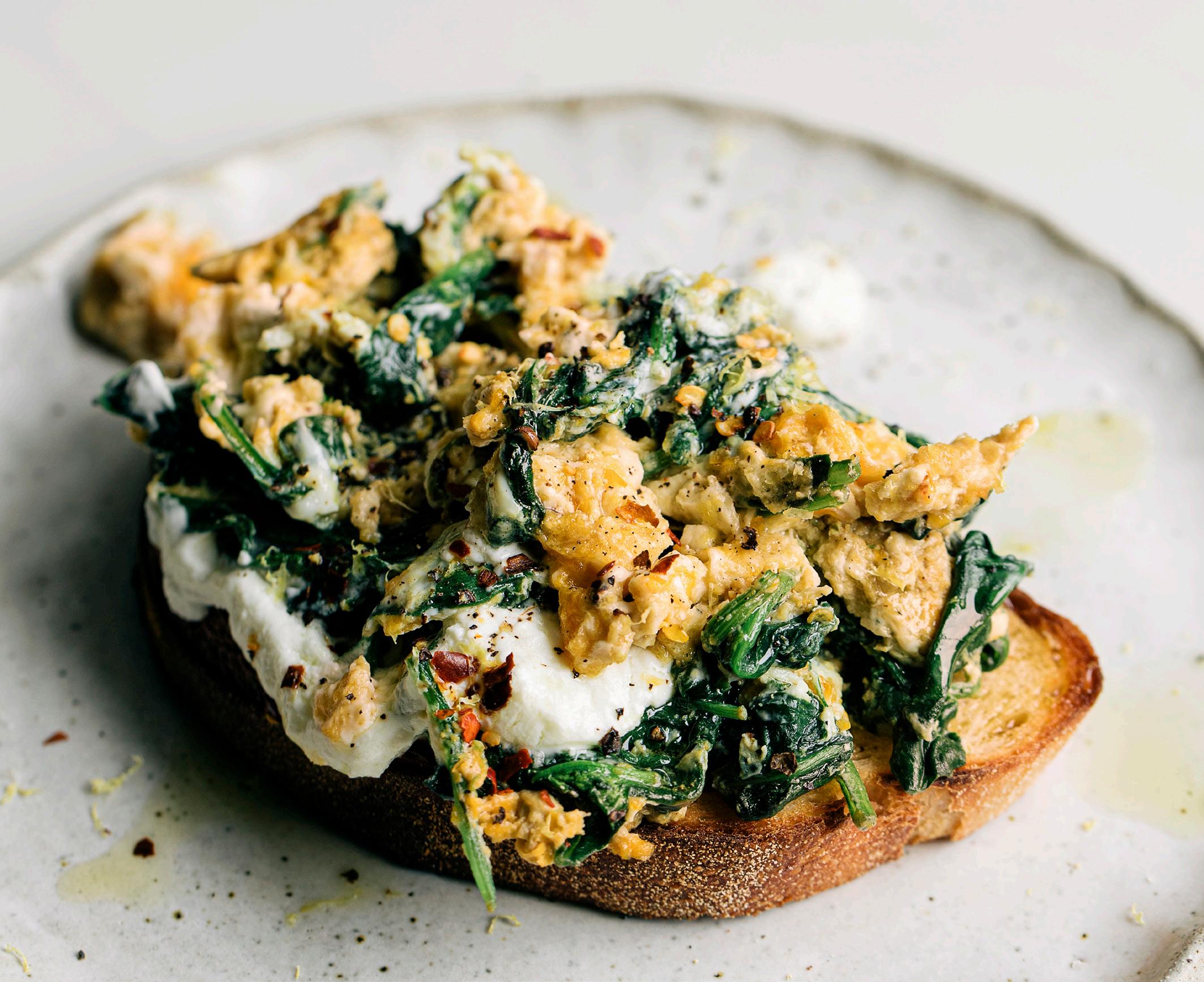 Ashley Alexander (Gather & Feast)
Ashley Alexander (Gather & Feast)
Olive oil
1 small fresh garlic clove (crushed)
4 Eggs
50-75g Marinated goat cheese
Good handful of baby spinach
Pinch of chili flakes
Lemon zest
Cracked black pepper & sea salt
2 Slices sourdough bread
Place a saucepan on medium to high heat.
Add a drizzle of olive oil, a few large handfuls of baby spinach, a sprinkling of garlic powder (or garlic clove), a pinch of chili flakes, a pinch of sea salt, and sauté until the spinach has wilted. Crack the eggs directly into the pan and gently swirl. Continue moving the egg and spinach mixture around in the pan until the eggs are cooked through.
Turn off the heat and add some marinated goat cheese. Gently and barely mix the cheese into the egg mixture. Add salt and freshly cracked black pepper to taste.
Now place a generous scoop of the mixture onto toasted sourdough. Top with chili flakes, a drizzle of olive oil, fresh lemon zest, and serve.
270ml coconut cream
10cm piece fresh ginger, thinly sliced
3 large kaffir lime leaves, finely shredded
3 garlic cloves, roughly sliced
2 chicken breast fillets, roughly 500g in total
Pinch of sea salt
SALAD
200g rice stick noodles
2 Lebanese cucumbers, finely sliced diagonal
1 large bunch coriander, roughly 1 cup leaves (keep the stalks for the dressing)
1 large bunch fresh Thai basil, 1 cup leaves
1 large bunch fresh Vietnamese mint, 3/4 cups
Zest and juice of 1 lime
1/2 cup toasted coconut flakes
1/3 cup roasted peanuts, roughly chopped
Coriander stalks, roughly 1 cup, finely chopped
1 small green chili, finely chopped
1 clove garlic, freshly grated or crushed
3 tablespoon rice wine vinegar
3 tablespoon fish sauce
3 tablespoon pure maple syrup
Line a solid steam tray with baking paper and add the 270ml coconut cream, freshly sliced ginger, finely shredded kaffir lime leaves, and the roughly sliced garlic cloves.
Arrange the chicken over the top and sprinkle with a pinch of salt. Steam at 85°C for 35 minutes. Remove the chicken from the oven and set aside to rest.
Combine the dressing ingredients in a small jar, shake to combine, then set aside. Alternatively, you can blend the dressing ingredients to create a smoother dressing.
Cook and drain the noodles as per packet instructions then set aside in a large serving bowl.
In a large bowl combine the sliced cucumber, coriander leaves, Thai basil leaves, Vietnamese mint leaves, and the zest and juice of 1 lime. Add roughly 2/3 of the coconut and peanuts then toss to combine.
Remove the chicken from the tray and strain the coconut sauce into a jug.
Pour roughly 1/2 cup of the coconut sauce over the noodles then toss to combine.
Arrange the noodles then add the salad. Finely slice the chicken and add to the serving bowl.
Sprinkle with the remaining coconut and peanuts then drizzle with the dressing.
 Ashley Alexander (Gather & Feast)
Photography by Gather & Feast
Ashley Alexander (Gather & Feast)
Photography by Gather & Feast
This recipe is all about inviting family or friends over and getting stuck into an easy meal together. For a lighter vibe, replace the tortillas with large lettuce cups.
Baking fish is such an easy and mess-free way to cook it, and these tacos are a delicious vehicle for trying different species. I have suggested fillets, but a couple of 700 g (1 lb 9 oz) whole fish would also work, as would prawns (shrimp); you just need to adjust the cooking time – about 15–20 minutes for fish, and 4 minutes for peeled banana or tiger prawns.
800 g (1 lb 12 oz) firm white-fleshed fish fillet, such as ling, flathead, gurnard or barramundi
Sea salt flakes and ground black pepper
1/2 cup (125 ml) Everything Mexican marinade and dressing
2 corn cobs, husks removed
2 tablespoons olive oil
1 small red onion, finely chopped
1 bunch coriander (cilantro), leaves picked and roughly chopped
2 vine-ripened tomatoes, diced
4 limes, plus lime wedges, to serve
16 small corn tortillas
2 avocados, sliced
Pickled jalapeños, to serve
1 cup (260 g) natural Greek-style yoghurt
1 clove garlic, crushed Finely grated zest and juice of 1 lime Pinch of sweet smoked paprika
Place the fish in a baking dish, season lightly with salt and pour the Everything Mexican marinade and dressing over the top. Allow to stand in the fridge for 30 minutes to marinate, if you can.
Preheat a barbecue or char-grill pan to high. Rub the corn with half the olive oil and grill, turning often, for 10 minutes, until charred. Allow to cool, then carefully slice the kernels off the cobs and place in a bowl with half the red onion and half the coriander.
Place the tomato in a second bowl with the remaining red onion and coriander. Squeeze the limes over both the corn mixture and the tomato mixture, season each with salt and pepper and drizzle the remaining olive oil over each. Mix each bowl thoroughly and set aside.
To make the yoghurt sauce, combine all the ingredients in a bowl, season to taste and set aside.
Preheat the oven to 200°C (400°F). Place the fish and all its marinade on a baking tray lined with baking paper and bake for 8–10 minutes, until it just starts to flake away with light pressure from a fork at its thickest part.
While the fish is cooking, warm the tortillas over the hot grill for 10 seconds each side. Wrap them in a clean tea towel to keep warm.
Place the sliced avocado on a plate. Transfer the fish and any remaining marinade to a separate plate and serve with the corn, tomato salsa and jalapeños, letting everyone build their own tacos. The idea is to fill a warm tortilla with a little corn, avocado, some salsa, fish and jalapeños, then finish with a drizzle of the yoghurt sauce and a squeeze of lime juice.
PRO TIP: To make serving time a breeze, prep everything in advance up until cooking the fish and warming the tortillas. You could also marinate the fish up to 3 hours in advance and leave it in the fridge, then take it out 30 minutes before cooking to bring it to room temperature.

Place all the ingredients in a blender and blend into a purée. Adjust the seasoning to taste, if desired. Transfer to an airtight container or jar and store in the fridge for up to 1 week.
1 tablespoon raw cacao powder
1/2 teaspoon ground cinnamon
2 teaspoons ground cumin
1 teaspoon ground coriander
1–2 tablespoons honey or maple syrup
1/4 cup chipotle in adobo
1/2 cup (125 ml) olive oil
1/4 cup (60 ml) apple cider vinegar
Juice of 1 orange
1 tablespoon soy sauce
2 cloves garlic
Photography by Tom Walton Tom Walton
Tom Walton
5 eggplants (aubergines)
Sea salt flakes and ground black pepper
2 tablespoons extra virgin olive oil
2 tablespoons chilli oil
Juice of 1 lemon
2 tablespoons pomegranate molasses
2/3 cup (185 g) garlicky whipped tahini
2 tablespoons za’atar
1/3 cup (55 g) pitted kalamata olives, chopped
1 cup (175 g) crispy roast chickpeas
Handful dill sprigs, roughly chopped
Handful mint leaves, roughly chopped
Preheat a barbecue to high and cook the eggplants whole for 15 minutes, turning throughout, until the skins are charred and the eggplants are soft. Alternatively, working in batches, place the whole eggplants over an open gas cooker flame and cook for 10 minutes, turning throughout, until soft. You can also bake them by placing them directly onto the oven racks and cooking at 230°C (450°F) for 20–25 minutes, until soft (though you won’t get the same smoky flavour).
Place the cooked eggplants on a wire rack set over a plate or tray and allow them to drain and cool for a few minutes, then carefully peel off the burnt skin, leaving the eggplants whole and the tops intact, if possible. Carefully transfer them to a serving platter, season with salt and pepper, then drizzle with the olive oil, chilli oil, lemon juice and pomegranate molasses. To serve, spoon the garlicky whipped tahini over the eggplants and sprinkle with the za’atar. Top with the olives, crispy roast chickpeas and herbs, and dig in.
This is my everything sauce – I literally spoon it over everything from fish to a tray of roast veggies. It also makes a killer dip and is a great vegan replacement for yoghurt. I love this sauce as it is, but you could add so many other flavours to it like chilli, spices, miso – it really is that versatile.
If your sauce is too runny, just add some more tahini. If you make this by hand, your tahini might look like it has split or it may clump together, but that just means it needs more water and whisking. For a lighter version, make this in a blender.

1/2 cup (135 g) hulled tahini Juice of 1 lemon 2 cloves garlic, finely crushed Sea salt flakes and ground black pepper
Place all the ingredients in a blender with 2/3 cup (170 ml) water and blend into a smooth paste. Adjust the water and lemon juice until you have a silky consistency. Alternatively, combine the ingredients in a bowl with a whisk or fork, whisking in the water slowly until smooth and combined. Transfer to an airtight container or jar and store in the fridge for up to 1 week.
PRO TIP: This sauce thickens when stored overnight, so to thin it out again, add lemon juice, water and seasoning as required.
Photography by Tom Walton



200g butter, chopped
1 cup brown sugar, firmly packed
1 teaspoon vanilla bean paste or extract
2 eggs
2 cups plain/all-purpose flour
1 teaspoon bicarbonate soda
200g dark or white chocolate, roughly chopped
1/4 cup roughly chopped macadamia nuts
Pinch sea salt flakes
1-liter good quality vanilla ice cream
Sea salt flakes, for sprinkling
Photography by Gather & FeastPreheat oven to 180°C/350°F (160°C/320°F fan forced oven).
Line the base and sides of two 24cm x 16cm brownie pans with baking paper.
Melt the butter in a small saucepan over very low heat. Simmer, stirring occasionally for 10 minutes, or until the butter is lightly foaming and the solids caramelise at the bottom of the pan.
Once the butter is golden brown and has a nutty aroma, remove from the heat and pour into a bowl to cool.
Combine the sugar, vanilla extract, and eggs in a medium bowl. Beat with an electric mixer for 5 minutes or until the sugar crystals have dissolved. Add the cooled brown butter and mix again until combined. Sift the flour, bicarbonate soda, and salt together.
Add the chocolate and macadamias and stir into the mixture until everything is completely incorporated.
Spoon half of the mixture evenly into each pan, pressing out into the edges. Bake for 20 minutes at 180°C/350°F (160°C/320°F fan forced oven).
Remove from the oven and allow to cool completely in the pans. Scoop ice cream onto one of the cookie bars in the pan then flatten and spread the ice cream with the back of a spoon.
Remove the second cookie bar from its pan and remove the baking paper. Place the second cookie bar on top of the ice cream and press it down a little.
Cover and freeze overnight until firm.
To serve, lift the cookie bar from the pan, remove the baking paper, slice into small bars or squares, and sprinkle with a little sea salt.
Ashley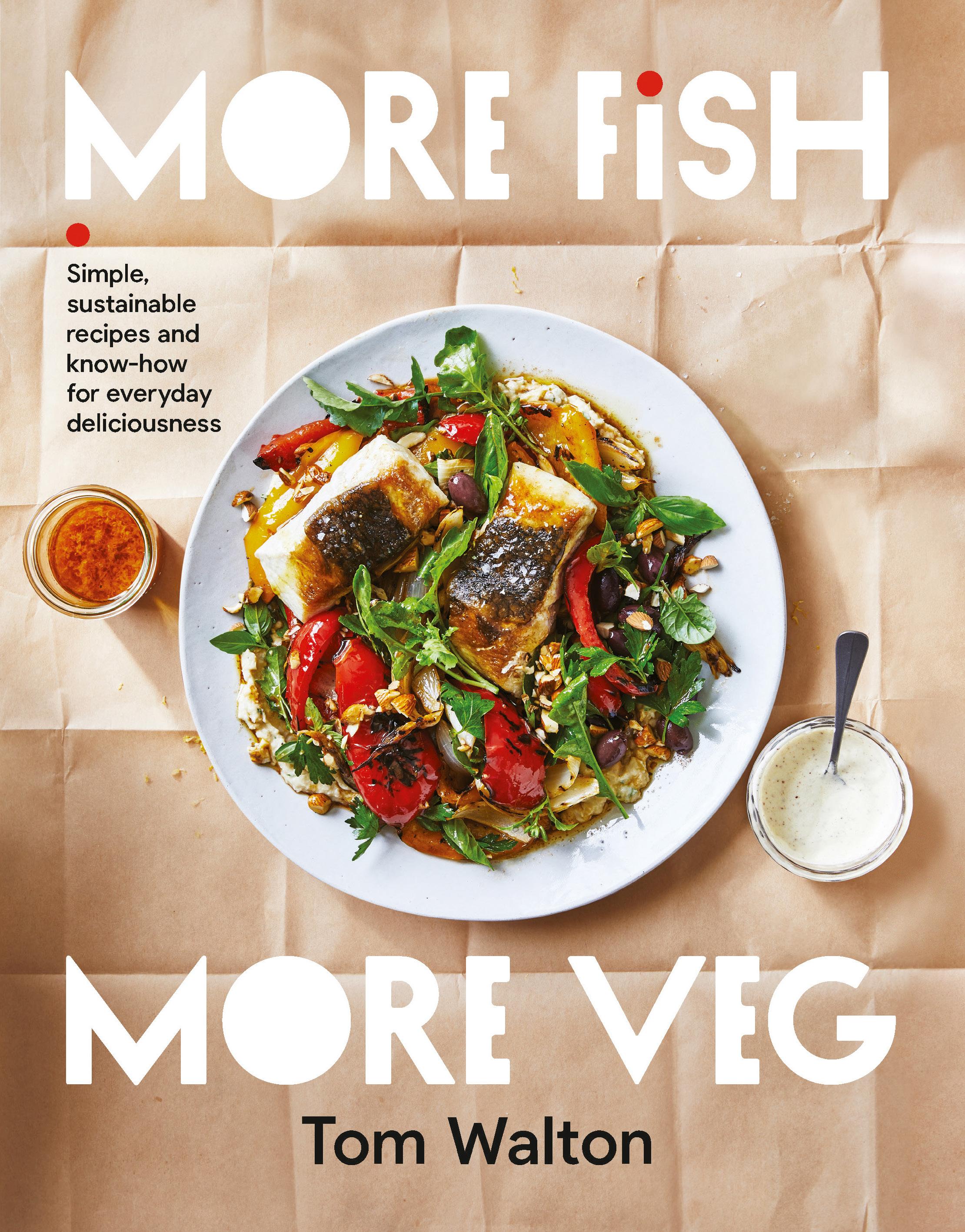
Find a fishmonger you can trust, and begin a conversation to discover what may be in season and particularly good at that time. Asking the simple question, ‘what’s great right now?’ at the fish counter, as well as letting them know you are interested in trying what’s at its best, is very powerful.
You can, of course, buy great seafood from supermarkets, too. The key to buying quality seafood from supermarkets is to look for sustainability accreditation, as many stores only stock seafood that carries these credentials. When shopping, look for seafood that glistens, looks fresh and has no aroma other than that of the sea.
Be brave, open-minded and prepared to try a species you may not have cooked before. The more you start doing this, the more you’ll begin to broaden your repertoire and knowledge and – most importantly – your confidence. There are so many recipes in this book you can interchange and there are so many species that can be substituted in each recipe.
There are many excellent resources available. One of my favourite books on the subject is the Australian Fish and Seafood Cookbook, an incredible deep dive into the world of Australian seafood and one I reach to all the time for inspiration. In the UK, Mitch Tonks’ Fish: The Complete Fish & Seafood Companion does the research on your behalf and celebrates the seasons beautifully, while a must-read in the US is Barton Seaver’s American Seafood. There are also great online resources out there to help us better understand our seafood. The FRDC website has incredible detail about species, seasons, harvesting methods and sustainability. Doing a little bit of research and arming yourself with knowledge before going shopping is a great way to navigate the world of seafood sustainability.
Looking for certain labels that represent responsible fisheries can be helpful, but not paramount. For example, while there is still much room for improvement, both Australia and New Zealand have some of the most strictly managed sustainable fisheries on the planet. Both countries also have the most spectacular species, and a level of care that is unmatched. The UK and US have a lot of accredited fisheries, and a lot of small fisheries where seasonal catch is at the heart of their operations.
Ultimately, it comes down to gaining confidence to buy in-season species that you may not have previously tried. It may mean you need to step out of your habits, but if you undertake to purchase seafood of the highest quality, you can be sure of the utmost level of care from catcher or farm, to market. Those producing the highest quality are innately concerned with the sustainability of the species and the fishery.
Be mindful that the stock density and status of every species is different all over the planet. A fishery or farm in one part of the world may be the most sustainable of its kind, and yet in other places, its sustainability might be in question, so ensure you investigate before casting a wide net.
Take salmon, for instance: in Australia, we farm Atlantic salmon, which GoodFish – Australia’s sustainable seafood guide – says no to. I choose to cook New Zealand king salmon, a slightly different species that is farmed to world’s best practices by Ora King Salmon and Mount Cook Alpine Salmon. Our choices when purchasing fish influence good practice and quality, and the more we get this part right, the more we can ensure there is plenty of fish tomorrow and long into the future.
Whole fish stays fresher longer and allows you to check the quality markers: eyes should be clear and plump, aromas should be clean and fresh like the sea, scales should have a consistent covering, and the fish should be covered in a clear, clean protective coat of natural fresh ‘sea slime’. If you don’t have the confidence to fillet a whole fish, buy it whole anyway, and ask your fishmonger to fillet it for you. If you’re buying fillets, look for those with a fresh, clean aroma, a bright sparkling colour and a translucent sheen.
This can be a minefield, because we have access to seafood from all over the world, and different seasons arrive at different times across Australia. So always ask where your seafood comes from, or check the label if buying from the supermarket. But when a fish is in peak season, it is abundant, cheaper and the quality will be second to none. This means it works with your budget, it’s not impacting stock density and you will be enjoying the fish or seafood at its optimum.
If you want a better understanding of where your food comes from, get as close to the source as you can. I’m not suggesting you knock on the gate of a farm, but try to visit a fish market or a farmers’ market and speak to the people closest to the source. Often, especially when it comes to farmers’ markets, it’s the producer, catcher or farmer sharing their crops or catch. Knowing more about how your food is grown, where it’s grown or how it’s caught, can give you a better understanding of its impact on your health, how to cook it and how you are fuelling your body.
Famous British chef Fergus Henderson put the notion of nose-to-tail eating on the map. Sure, he didn’t invent it, but he inspired a generation of chefs and consumers to respect the whole animal, and showed them just how delicious secondary cuts and offal can be. Utilising the whole fish is no different. You don’t need to eat eyeballs, but whole fish is, in fact, really simple to cook and generally more affordable. It’s also a little more forgiving – the spine acts as a heat conductor and the fats along the spine help keep the flesh moist. And if you’re thinking about sustainability, using every part of a whole fish is very important. You can use the bones for a broth, the head can be split and grilled – there are so many uses that are simple and delicious. If fish butchery is not your thing, ask your fishmonger to fillet a whole fish for you, but ask to keep the bones and head to make stock, which forms a tasty base for so many meals.
When it comes to food, simplicity is one of the most spectacular things. When you use quality ingredients, all you need is to choose the technique that helps them shine on the plate. A less-is-more approach means the palate won’t get confused by too many flavours, so you can really appreciate the produce. The more you cook with variety, the more you understand the versatility of ingredients. When it comes to fish, eating the same species over and over is not very sustainable. There are so many wonderful types of seafood – the more you mix it up, the less impact there’ll be on specific fisheries and the greater the benefits to your health.
Not everyone has a green thumb, but growing a few things at home – even a small balcony garden with tomatoes, herbs and perhaps something easy like silverbeet (Swiss chard) – is a great option. When you have herbs on hand, or you experience the stages of a tomato from seed to blushing red beauty, there is a sense of joy and satisfaction in achieving a goal with the most delicious reward. And, if dipping your toes in the deep blue takes your fancy, give fishing a go and head straight to the source yourself!
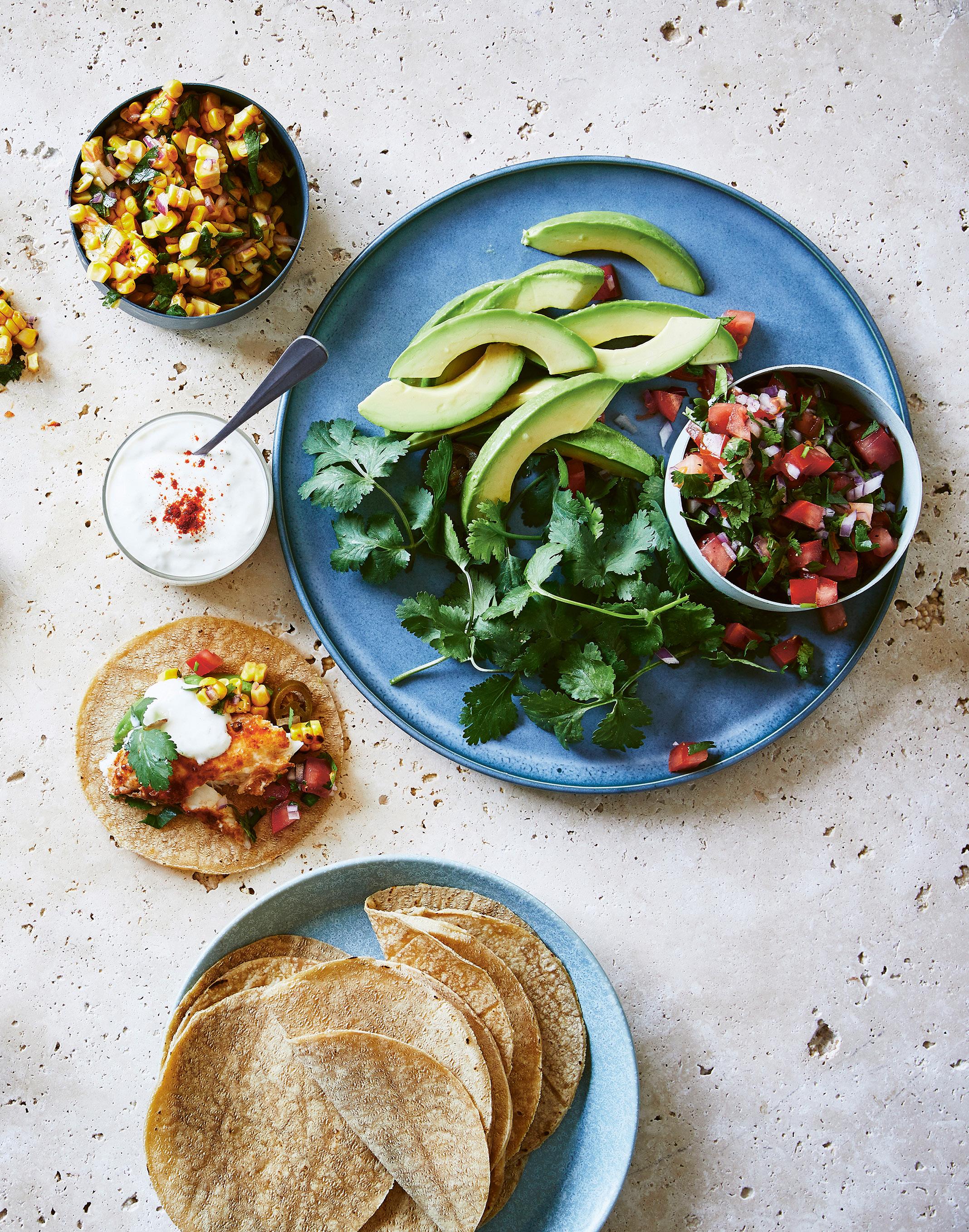
Our meal plans have been designed to provide you with a healthy balanced plan so that you can keep structure within your week. We have combined simple, easy to make meal ideas with exciting recipes featured in this magazine. You can find our recipes within our journal online at fit.com.au.
BREAKFAST
Soft boiled eggs with toast
LUNCH
Minestrone soup
DINNER
Grilled chicken with vegetables
SNACK
Hummus with celery, cucumber & carrot sticks
DRINKS
Up to 3L of water.
3 coffees per day if made with water. 1-2 per day if made with milk. Up to 3 black or herbal teas. 1 sugar-free hot chocolate
BREAKFAST
Granola with fresh fruit & greek yoghurt
LUNCH
Chicken caesar salad wraps
DINNER
Summer fish tacos
SNACK
1x piece of fresh fruit
DRINKS
Up to 3L of water.
3 coffees per day if made with water. 1-2 per day if made with milk. Up to 3 black or herbal teas. 1 sugar-free hot chocolate
BREAKFAST
Porridge with fresh fruit
LUNCH
Cucumber & avocado sandwich
DINNER
Black bean chicken with noodles
SNACK
1x piece of fresh fruit
DRINKS
Up to 3L of water.
3 coffees per day if made with water. 1-2 per day if made with milk.
Up to 3 black or herbal teas. 1 sugar-free hot chocolate
BREAKFAST
Fried eggs & bacon
LUNCH
Fish burgers with homemade tartare
DINNER
Rosemary chicken roast
SNACK
Salted macadamia with nut brittle ice cream bars
DRINKS
Up to 3L of water.
3 coffees per day if made with water. 1-2 per day if made with milk.
Up to 3 black or herbal teas. 1 sugar-free hot chocolate
Easy peasy cheesy frittata
LUNCH
Creamy pesto chicken bagel
DINNER
Coconut & ginger steamed chicken with fresh herb & noodle salad.
SNACK
Small handful of mixed nuts
DRINKS
Up to 3L of water. 3 coffees per day if made with water. 1-2 per day if made with milk. Up to 3 black or herbal teas. 1 sugar-free hot chocolate
BREAKFAST
Green egg scramble on sourdough
LUNCH
Dug’s chicken & prawn Asian salad
DINNER
Roast pork baked dinner with baked potatoes and vegetables
SNACK
Small handful of mixed nuts
DRINKS
Up to 3L of water.
3 coffees per day if made with water. 1-2 per day if made with milk. Up to 3 black or herbal teas. 1 sugar-free hot chocolate
BREAKFAST
Soft boiled eggs with toast
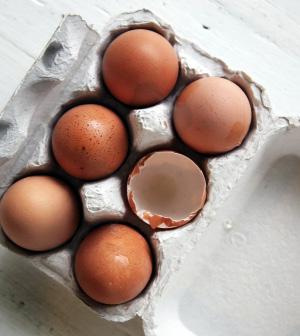
LUNCH
Grilled tofu and garden salad
DINNER
Smoky whole eggplant with crispy chickpeas, olives and Tahini
SNACK
Greek yoghurt with fresh fruit
DRINKS
Up to 3L of water.
3 coffees per day if made with water. 1-2 per day if made with milk. Up to 3 black or herbal teas. 1 sugar-free hot chocolate
 Photography by Destination NSW
Photography by Destination NSW
Summer is just around the corner and we couldn’t be more excited - with the weather warming up our city really comes to life with so many experiences to try. We’ve gone ahead and put together a snapshot of a few of the amazing adventures you can have in Sydney this summer.
We may be spoilt for choice when it comes to beaches, but across our expansive coastline Balmoral Beach stands out as a particular highlight. With beautiful calm water, Balmoral makes for the perfect beach for those who just enjoy the sun, and for those who want to explore the water. Balmoral is a popular location for those who want to try snorkelling, kayaking, or stand-up paddle boarding. Balmoral also has access to a number of foreshore walking trails that can take you as far as Taronga Zoo, or you can find your way onto the Harbour Bridge, to The Spit Bridge foreshore walking track. A great way to spend a day in the Northern Beaches.
If sitting on a beach isn’t your thing, and you want to get up to something a bit more active you could try one of Sydney’s great beach walks. Our favourites are the Manly to Curl Curl Beach Walk and the Coast Walk.
The Coastal Walk goes through Bondi to Maroubra and is a 12 km cliff top walk that covers all of the main beaches in the Eastern Suburbs—known for its stunning views and for having ample options for pit stops along the way. You could take a rest and have a swim, or grab a bite to eat along the way.
BONDI BEACH AND MAROUBRA BEACH COASTAL WALK & MANLY TO CURL CURLIf you haven’t explored the Manly to Curl Curl Beach Walk this is your sign to get wandering. It’s a loop track that explores the coast between, you guessed it, Manly and Curl Curl. However, you might not have guessed that you cut through several reserves and suburbs including a nice walk up to Manly Lagoon and back down Curl Curl lagoon. And just like the Coastal Walk, you’ve got a number of rest options along the way to grab lunch or have a dip in the water.
as possible? Some of our favourite spots include Wendy Whiteley’s Secret Garden - as the name suggests, this beautiful garden is hidden behind Luna Park in Lavender Bay. Here you’ll not only find one of the most beautiful public gardens, but you’ll also find incredible views of The Harbour Bridge and water.
If you want a view of the Harbour that really takes your breath away, then Milk Beach is the spot for you. This little secret gem is in Vaucluse and you can get there via public transport. Not only does Milk Beach offer up a great view, but it also offers up everything you’d expect from a beach and more - fishing, snorkelling, and plenty of space to enjoy a picnic.
Adventures are best shared, and who better to share them with than man’s best friend? If you’ve got a four-legged friend, take them out for the day at one of the following dog-friendly beaches.

Clifton Gardens Beach is one of the many highlights on the popular Taronga Zoo to Balmoral walking track. While dogs aren’t allowed on the beach they are allowed on the reserve and can be exercised off-leash all day Monday to Friday, and before 9 am and after 4 pm Saturday, Sunday and on Public Holidays on the grassed areas.
Right at the tip of Sydney, you’ll find Ku-ring-gai National Park; filled with incredible natural beauty and rich Aboriginal history. The park is packed to the brim with things to discover - rainforests, cliffs, mangroves, Aboriginal sites, picnic areas, secluded beaches, lookout points, mountain biking trails, and various walking tracks. You’ll find stunning views of the Hawkesbury River and panoramic views of the Central Coast; If you want to explore the walking tracks you’ve got options that range from as short as 1km return to 13km. And whilst it is a great place to hike and cycle, you can also fish or just have a stroll and picnic with your family.
Our obvious bias aside, we think our harbour makes Sydney one of the most beautiful cities in the country, if not the world; and what better way to spend this summer than taking in as many vantage points of our harbour
Kutti Beach in Vaucluse is one of Sydney’s bestkept secret beaches and is accessible via a narrow staircase right next to the Vaucluse Amateur Sailing Club, located at the end of Wharf Road. The path looks like a dead-end street, but don’t turn away as the staircase is there. And unlike Clifton Gardens Beach dogs are allowed on the beach and in the water on a lead.

